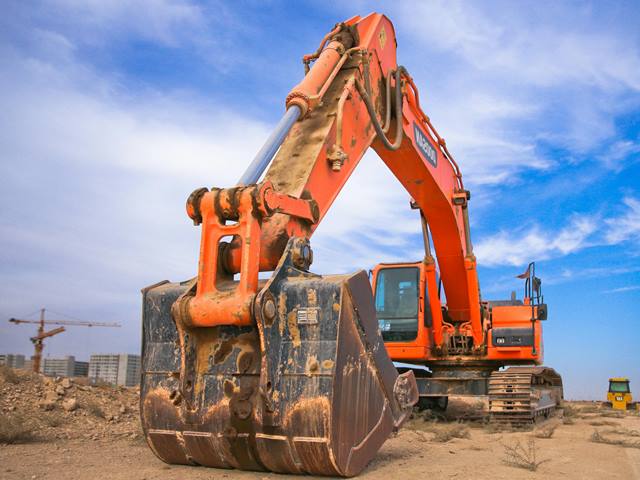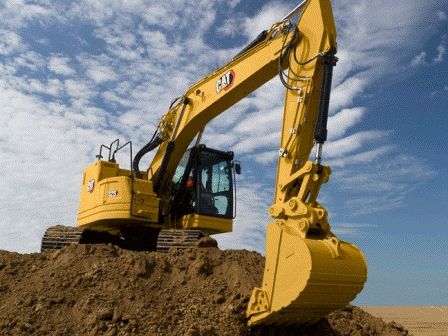Learn how to safely and efficiently use excavators with a detailed guide on Excavator Lifting Capacity Charts.
Understand key factors, reading instructions, and safety precautions for optimal performance on the job site.
An excavator lifting capacity chart is a crucial document used to determine the safe lifting limits of an excavator. This chart ensures the machine operates within its design limits, preventing accidents and maintaining operational efficiency. Here’s a detailed explanation:
Key Elements of an Excavator Lifting Capacity Chart
- Machine Model and Configuration:
- Specific to each excavator model.
- Includes details about the machine configuration, such as the type of arm, bucket, and any additional attachments.
- Lift Point Radius:
- The horizontal distance from the center of the rotation (slew) to the lift point.
- Usually measured in meters or feet.
- Boom and Arm Position:
- The angle and extension of the boom and arm.
- Different positions can drastically affect the lifting capacity.
- Load Position:
- Specifies whether the load is lifted over the side or the front/rear of the excavator.
- The stability varies depending on the load position relative to the machine.
- Lift Capacities at Various Radii:
- Lists the maximum weight that can be lifted at different radii.
- Typically provided in a tabular format.
- Stability Limits vs. Hydraulic Limits:
- Stability Limits: The point at which the excavator would tip over if the load is exceeded.
- Hydraulic Limits: The point at which the hydraulic system can no longer lift the load, even if the machine remains stable.
- Load Charts with and without Counterweights:
- Some charts show capacities with different counterweight configurations.
- Counterweights enhance stability and increase lifting capacities.
How to Read the Chart
- Identify the Machine Model:
- Ensure you are referring to the correct chart for your specific excavator model and configuration.
- Determine the Lift Point Radius:
- Measure or estimate the distance from the center of rotation to where the load is to be lifted.
- Check Boom and Arm Position:
- Adjust the boom and arm to the recommended position as per the chart for maximum safety and efficiency.
- Locate the Correct Load Capacity:
- Find the intersection point on the chart that corresponds to the lift radius and load position.
- Ensure the weight of the load is within the capacity limits specified.
- Consider the Stability and Hydraulic Limits:
- Always prioritize the lower value between stability and hydraulic limits to ensure safety.
Practical Tips
- Regular Training: Operators should be trained to read and understand lifting capacity charts.
- Routine Inspections: Regularly inspect the excavator to ensure all components are in good working condition.
- Avoid Overloading: Never exceed the recommended lift capacities.
- Use Correct Attachments: Ensure that the attachments used are suitable for the lift and do not negatively impact the machine’s stability.
Example of a Chart Entry
| Radius (m) | Over Front Capacity (kg) | Over Side Capacity (kg) |
|---|---|---|
| 3.0 | 3500 | 3200 |
| 4.5 | 2900 | 2600 |
| 6.0 | 2300 | 2100 |
| 7.5 | 1800 | 1600 |
In this example:
- At a radius of 3 meters, the excavator can lift 3500 kg over the front and 3200 kg over the side.
- At a radius of 6 meters, the capacity decreases to 2300 kg over the front and 2100 kg over the side.
Understanding and using the excavator lifting capacity chart correctly is essential for safe and efficient operations in construction and other heavy-lifting applications.
FAQs about Excavator Lifting Capacity Chart
Here are some frequently asked questions (FAQs) about Excavator Lifting Capacity Charts:
1. What is an excavator lifting capacity chart?
An excavator lifting capacity chart is a reference guide that outlines the maximum weight an excavator can safely lift at various boom and arm positions and distances from the machine’s center of rotation.
2. Why is the lifting capacity different when lifting over the side versus the front?
Lifting over the side usually has a lower capacity because the excavator is less stable in this position compared to lifting over the front or rear, where the machine’s weight is more evenly distributed and supported.
3. How do I determine the lift radius?
The lift radius is the horizontal distance from the center of the excavator’s rotation (slew ring) to the point where the load is attached to the lifting equipment (usually the bucket or an attachment).
4. What factors affect the excavator’s lifting capacity?
Key factors include:
- Boom and arm length and position.
- Lift radius.
- Machine weight and counterweights.
- Ground conditions.
- Load position relative to the machine (front, rear, or side).
5. What is the difference between hydraulic limits and stability limits?
- Hydraulic limits refer to the maximum load the hydraulic system can lift.
- Stability limits refer to the maximum load the machine can lift without tipping over.
6. How often should operators check the lifting capacity chart?
Operators should consult the lifting capacity chart every time they plan to lift a load to ensure it is within safe limits for the given configuration and conditions.
7. Can the lifting capacity be increased by adding counterweights?
Yes, adding counterweights can increase the lifting capacity by improving the machine’s stability. The capacity chart usually provides different values based on the use of different counterweight configurations.
8. What should I do if my load exceeds the chart’s capacity?
If the load exceeds the chart’s capacity, do not attempt to lift it. Instead, use a larger excavator with a higher lifting capacity or find alternative methods to manage the load.
9. Are lifting capacity charts the same for all excavator models?
No, each excavator model has its own specific lifting capacity chart. Always use the chart provided by the manufacturer for your specific model and configuration.
10. Is operator training necessary for understanding lifting capacity charts?
Yes, operators should receive proper training to read and understand lifting capacity charts, ensuring safe operation and compliance with safety standards.
11. Where can I find the lifting capacity chart for my excavator?
The lifting capacity chart can usually be found in the excavator’s operation and maintenance manual, or on a decal located within the operator’s cabin. Manufacturers may also provide charts online or through customer service.
12. What safety precautions should be taken when lifting near the maximum capacity?
- Always operate on stable, level ground.
- Use appropriate lifting gear and attachments.
- Conduct a thorough inspection of the machine and lifting equipment before lifting.
- Monitor the load and machine closely during lifting operations.
- Ensure that no one is within the swing radius of the excavator.
By understanding these FAQs, operators and site managers can better ensure safe and efficient use of excavators when lifting heavy loads.

Excavating Equipment
What Types of Excavation Equipment Are Used on Construction Site?

Excavator Safety Manual
These machines can help you get your jobs done faster and more efficiently by using a safety manual.
